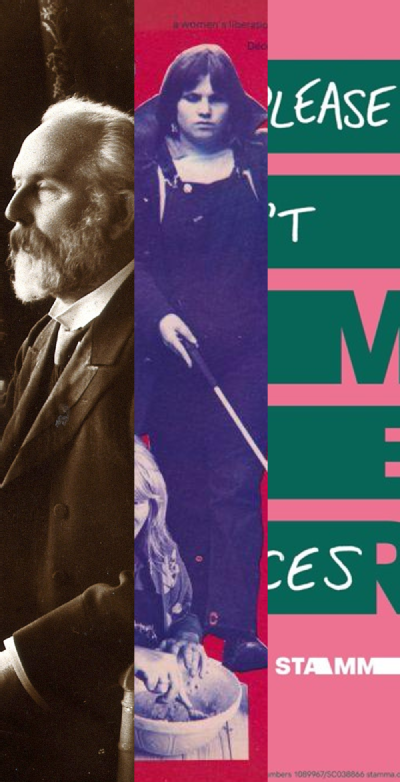Calendar
seminar: New Histories of Disability
Presentation, refreshments, discussion. All are welcome.
Disability history has become established as an important aspect of the history of health. It has provided insights on how disabled people were identified and discriminated against from able-bodied-majority societies, as well as questioning various historical assumptions about ‘normality’ is constructed. As we enter a new decade, what new approaches are we likely to see, and what new questions will disability history allow us to ask of the past?
Claire Shaw chairs this seminar which takes three papers from scholars at the Centre for the History of Medicine whose work contributes to these new histories of disability. Andrew Burchell will present his research into speech therapy and stammering, showing both how the condition was constructed over time and how people with stammers have had to campaign for their rights by positioning themselves uneasily between medical and social conceptions of disability. Samir Hamdoud is discussing Dr George E. Shuttleworth’s post-mortems on children and how Shuttleworth was able to operationalise forms of deficiency in childhood through an ideology of caring power. Beckie Rutherford will demonstrate how the activist group Gemma’s newsletters can be used to uncover the lives of disabled people in the past and contribute to new understandings about the intersection of disability with other identity categories such as gender and sexuality.
Andrew Burchell
Stammering, Speech Therapy and Disability in the Twentieth Century
The history of speech therapy and stammering sit uneasily within the history of disability. For a long time occupying a liminal position within categorisations and frameworks, this paper explores two interconnected themes surrounding stammering and its 'treatment'. Firstly, how understandings of stammering have been constructed over time. Secondly, how - as a consequence of its uncertain history - more recent efforts to campaign for the rights of people with stammers have been forced to position themselves uneasily between medical and social conceptions of disability.
Samir Hamdoud
Dr George E. Shuttleworth and The Caring Eye: Post-Mortems, Anatomical Science and Childhood at the Royal Albert
From 1870 to 1920, thousands of children of various backgrounds and personalities had experienced care, education and physiological treatment at the Royal Albert Institution (hereafter after RAI). Many were also subject to post-mortems. These are recorded in case file entries for children and in the writings and collection of visual materials of Dr George E. Shuttleworth who spent 23 years as the institution’s medical superintendent. This paper considers the practice, functions, and impact of the post-mortem at the RAI within a wider discussion of the visualisation of mental and physiological pathology in Victorian and Edwardian Britain. It foregrounds the place of post-mortems - and the visual documentation which accompanied them - in the developing sciences of anatomical psychology and physiology. It argues that Dr Shuttleworth was able to operationalise forms of deficiency in childhood (in its various guises – idiocy, imbecility, feeblemindedness etc) via social networks of anatomical science, observational practices of medicine and through an ideology of “caring power”. The paper draws attention to the ways in which these factors led to the mobilisation and dissection of many children’s bodies in the quest to define, refine and treat mental and physical disease entities.
Beckie Rutherford
‘I started a new life when I joined Gemma’: Disabled Women’s Organising, 1976 - 1992.
This paper will discuss the history of Gemma, a support group for disabled and non-disabled lesbians and bisexual women that formed in 1976. For many decades, Gemma acted as a crucial site of connection and communication, helping to combat the isolation experienced by many queer disabled women across Britain. The conversations that took place within Gemma’s newsletters offer keen insight into popular understandings of disability in this period and, in particular, how it intersected with other identity categories such as gender and sexuality. I will explore these ideas and then discuss more generally how Gemma’s history is useful for rethinking some of the broader questions animating the field of disability history.

